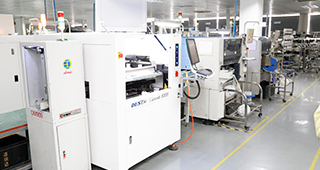Reflow defect problem in smt patch processing
Release Time:2018-10-08
Reflow soldering defect solving skills in smt patch processing
When we carry out reflow soldering, we often encounter defects during soldering. In response to this problem, Shenzhen SMT patch has been sorted out and found that there are 13 reasons for this kind of thing happening.
1, poor wetting
2, the amount of solder is insufficient and the virtual welding is broken
3, suspension bridge and shift
4, solder joint bridging or short circuit
5. Walking the solder ball near the solder joint
6. Air holes and pinholes distributed on the surface or inside of the solder joint
7. The solder joint is in contact with or exceeds the component body (suction phenomenon)
8. Fine tin wire between the soldered ends of the components, between the leads, between the soldered ends or between the leads and the through holes
9. The plating layer of the component tip peels off to different extents to expose the component body material.
10, the component surface is reversed
11. There are different degrees of crack defect in the component body or end.
12, cold welding, also known as solder joints
13. There are also some defects that are invisible to the naked eye, such as the size of the solder joints, the internal stress of the solder joints, and the internal cracks of the solder joints.
Etc., these can only be detected by X-ray, solder joint fatigue test and other means. These defects are mainly related to the temperature curve.
turn off. For example, if the cooling rate is too slow, large crystal particles will be formed, resulting in poor fatigue resistance of the solder joint, but the cooling rate is too fast.
It is easy to produce component body and solder joint cracks; for example, if the peak temperature is too low or the reflow time is too short, solder melting will occur.
Insufficient and cold welding, but excessive peak temperature or excessive reflow time will increase the production of co-boundary metal compounds.
Make the solder joint brittle, affect the solder joint strength, such as more than 235 degrees Celsius, it will also cause carbonization of the ring-itch resin in the PCB, affecting
PCB performance and longevity.









